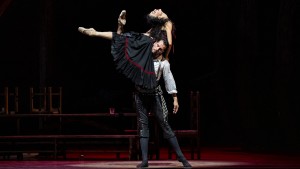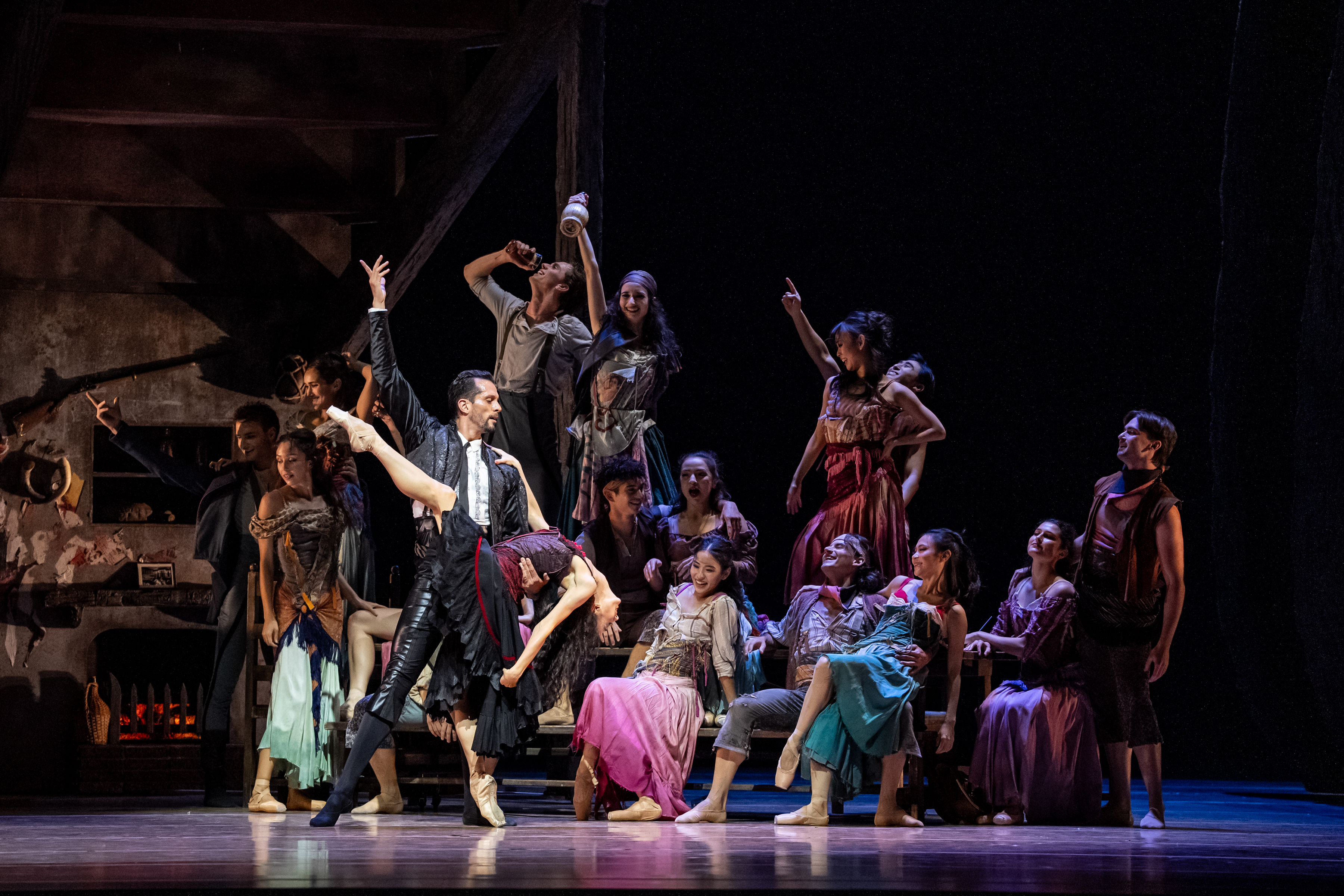Review: Joffrey Ballet’s ‘Carmen’ will stir your soul and break your heart

Lauren Warnecke | Review: Carmen (3.5 Stars)
September 19, 2025
In 1995, the Joffrey Ballet got a one-way ticket to Chicago and crossed its fingers. After four decades in New York, the company was on the brink of closure, arriving here with a pile of debt and a back-pocket hit ballet called “Billboards.”
It’s almost hard to believe that was the same company that opened “Carmen” at the Lyric Opera on Thursday night. Joffrey has always been good and characteristically bold, but it’s taken time and dogged determination to rebuild and comfortably count the Joffrey Ballet as among the best ballet companies in the country.
But they are, handily proven with “Carmen,” Joffrey’s first performance of its 70th season and running two weekends at the Lyric.

Carmen is just the latest of Joffrey’s acquisitions by late choreographer Liam Scarlett, who first made this danced interpretation of Georges Bizet’s 1875 opera a decade ago for Norwegian National Ballet. Through the quartet of Scarlett’s works in the Joffrey repertoire — “Vespertine,” “Hummingbird,” last season’s stunning opener “Frankenstein,” and now “Carmen” — there’s no doubt Scarlett was to be among his generation’s most prolific choreographers, had his life not been cut short.
Scarlett’s talent was multifaceted: he had an uncanny sensibility for blending classical and contemporary vocabularies in ways that, among other choreographers, can feel forced. To this, add an intricately crafted, always busy ensemble; guttural solos and duets; plus a deep sense of musicality — which is perhaps how he gets away with Carmen’s familiar score, sans the singing. Bizet’s iconic composition pulses through the body, rather than from it, perhaps a wink and a nod at the opera’s historically fraught relationship with ballet.
Whatever talent Scarlett brought to his creation of Carmen, it is up to the Joffrey dancers to do it. The ever-exquisite Victoria Jaiani takes the title role (shared with Anais Bueno, Jeraldine Mendoza, and Amanda Assucena during the two-week run).
Freewheeling Carmen starts a fight during a shift at her assembly-line job in a cigarette factory. Military men occupying the city shackle her wrists and put her in the time-out corner — she manages to woo one specific soldier, Don José, into letting her go. While unwinding at the tavern, Carmen meets a pompous bullfighter named Escamillo, and a love triangle ensues.
Don José and Escamillo are spectacularly danced by Alberto Velazquez and Dylan Gutierrez, respectively. And both men become quite problematic for Carmen — in different ways. The egomaniacal Escamillo, whose opening solo is part paso doble, part Michael Jackson’s “Bad” (complete with moonwalk and a crotch grab), convinces Carmen to marry him. Right away, it’s clear he’s not a very good husband. And Carmen questions whether she’s the marrying type, given her penchant for loving whomever she wants, whenever she wants.
Meanwhile, seduction has turned into obsession for Don José, whose inherent good nature turns very dark, very quickly.
Well, not that quickly. Carmen is approaching its third hour by the time you get to the best part: a brilliant last pas de deux, of which Jaiani and Velazquez’s performances will wreck you. If he can’t have her, Don José decides nobody can.
Theirs are not the only remarkable performances. Gayeon Jung dances a stunning Micaëla, the “good girl” from Don José’s past who serves up a yin to Carmen’s yang. And Carmen’s spunky Romani pals are certainly worth noting in this ballet’s rich supporting roles — Ao Wang and Yumi Kanazawa in particular, plus a trio of rambunctious Bohemian boys: Fernando Duarte, Xavier Núñez, and Zachary Manske.

Smart orchestrations by Martin Yates, brilliantly played by the Lyric Opera’s in-house orchestra, keep this beloved score from sounding like a karaoke track. Joffrey music director Scott Speck handily guides them at the podium.
Costume and scenic designer Jon Bausor has created a gritty, colorful world, muted by James Farncombe’s sepia-soaked lighting and a thick haze cascading from the cigarette factory’s smokestack. Taking the cue, Bausor smudges his urban Seville landscape with what looks like cigarette tar. A Romani tavern in the ballet’s second act is equally dingy; even the pomp and circumstance of the toreadors strutting in the bullfighting arena, while layered in a sparkly sheen, gives the clear impression that this is a working-class town.
That’s important. Carmen is set within the context of real events: In 1820, a liberal uprising led by Rafael del Riego fought to reinstate a constitutional monarchy in Spain. They succeeded, but only for three years, when the French army intervened to return King Ferdinand VII to absolute power.
The ballet opens with citizens of Seville painting “Libertad” on the doors of the cigarette factory. Revolutionary propaganda is similarly plastered on the walls. And political reform has not changed anyone’s opinion about the Roma people, whose nomadic, hedonistic lifestyles are anathema to others in the town.
Not that ballet generally does the best job with cultural context. And if you’re looking for authenticity, you won’t find it here, most obviously at the top of Act 3. Escamillo and his band of toreadors celebrate a successful bullfight (complete with a giant fake cow with two stakes driven through it). The Joffrey’s men twirl two-toned capes — if you can call them that — which are the wrong shape and thus wind up looking more like droopy baby blankets of an off-putting Pepto Bismol color on one side, tortilla beige on the other.
Like the chalky upset-stomach syrup they resemble, those capes alone left a sour taste in my mouth, contributing to something that’s not-quite-right about Carmen’s vibe. It’s a spectacular ballet, no doubt, exquisitely danced — and yet another contribution to ballet’s canon in which a woman is the collateral damage of two men’s big feelings.
See Carmen now through September 28 at the Lyric Opera House. Purchase tickets here.